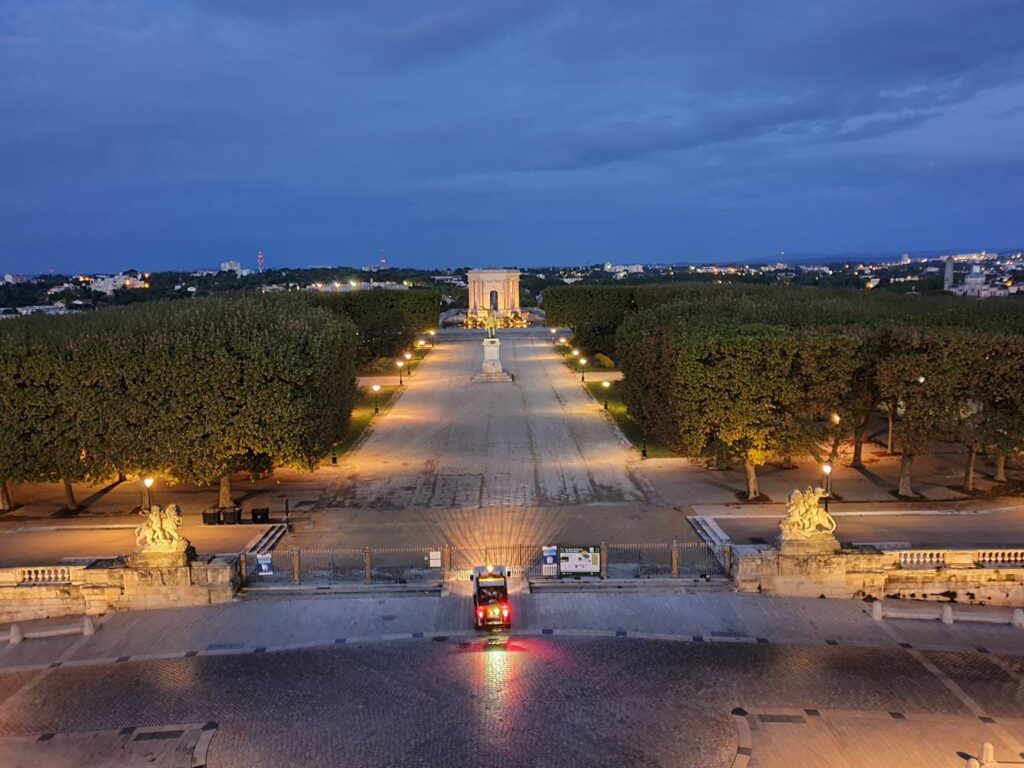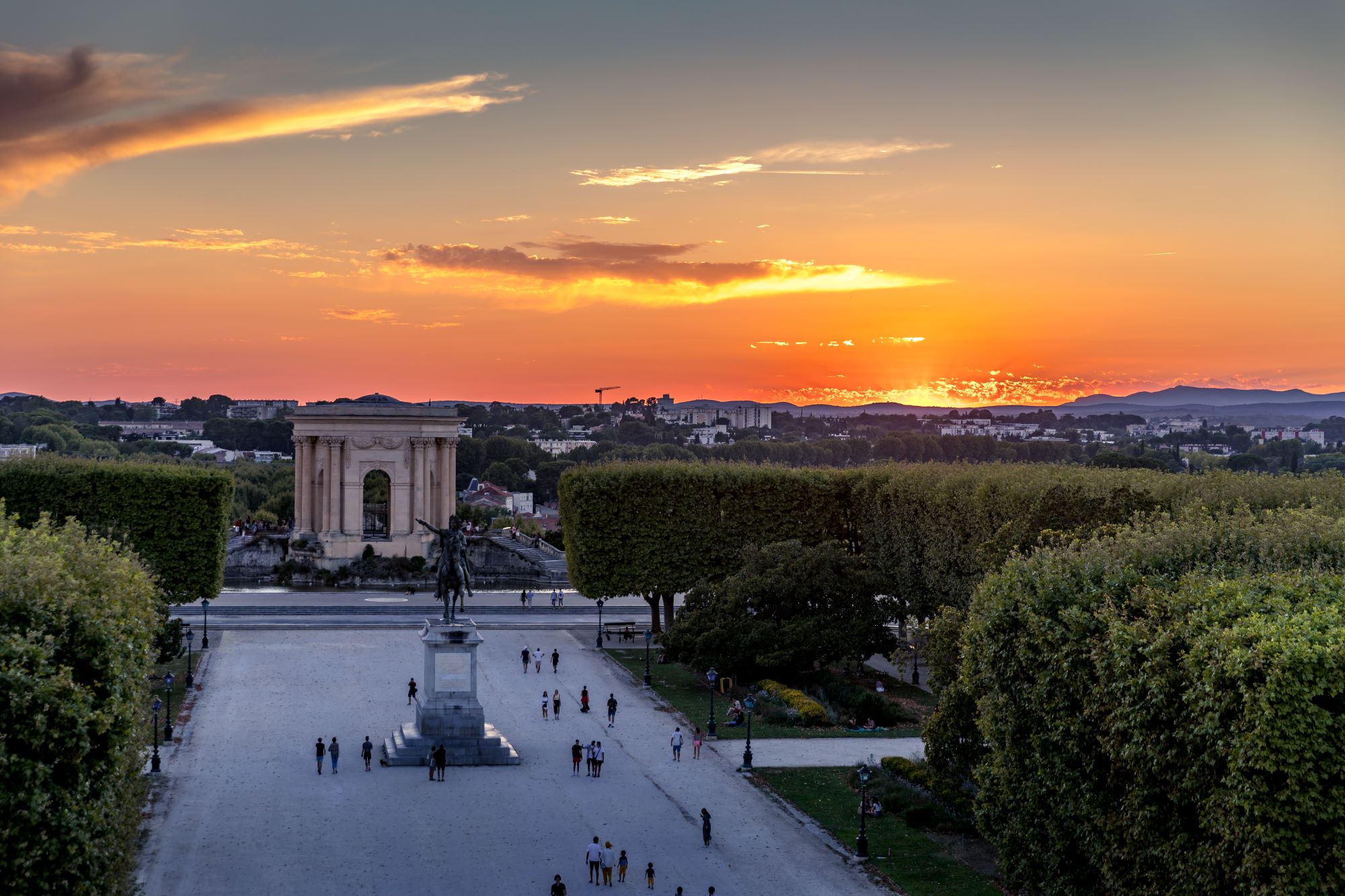
Royal Place of Peyrou
montpellier
France
This promenade, which construction was decided at the end of the 17th century, was built to house an equestrian statue of Louis XIV. Designed by the architect Daviler, the terraces offer views of the Cévennes and the Pyrenees.
More on royal place of peyrou
The architect Pitot added a 7 km aqueduct to supply Montpellier with water from the source of the Lez river. The reservoir, topped by a monumental water tower, was designed by Giral and Donnat, whose project was selected in 1767. Several sculptors helped to decorate the garden, including Injalbert’s “Children with Lions”, who stand guard at the entrance to the garden opposite the triumphal arch.
During the Summer months, the park is open from 7 a.m. to midnight, which makes it a popular spot in the early evening, especially in summer, when you can enjoy the coolness of the park, the basin and the view. The decision to close the park at midnight was taken to prevent squatting and drug dealing in the immediate vicinity of the city centre.
It is ideally located right next to the city centre and a tram stop, making it a popular place for Montpellier residents to take a stroll and for tourists to discover the cultural heritage of the city. One of the main challenges for the development of this site is that it should host different types of events (concerts, markets, sporting events, Christmas entertainment, etc.). The current lighting is provided by street lamps using obsolete technology that consume a great deal of energy.
pilot site goal

The aim of this pilot project is to set up an open-air laboratory for testing different lighting environments, which will not only enhance the unique historical heritage of the site, but also make it safer and more attractive for residents and visitors, who will be able to enjoy their stay and discover the city’s cultural heritage by making the most of the site’s natural darkness.
The lighting should respect the cultural and architectural values and support the multiple uses of the popular space, as well as take into account approaches for sustainability and biodiversity.
The pilot trial will mix different modern technologies to enhance the site and to make it more attractive, and also adapt the conditions to frequentation of use and needs of humans and nature. The methods to be studied will be intelligent lightings solutions, developed led optics, innovative road markings, projections, while respecting the constraints associated with preserving a historic site in a natural setting (urban park).
Local stakeholders and networks
Montpellier Metropole has a well-established partnership with cultural and creative businesses, notably in the form of the annual “Coeur de ville en lumière” event, during which videos produced by students are projected onto the façades of the city’s main monuments, including the Peyrou water tower.
In addition, as the site was classified as a historic monument by decree on 18 August 1954, any development must be approved
by the architect of monuments of France, the institution responsible for preserving France’s architectural and cultural heritage.
Additionally, there are astronomical and environmental associations, CCI companies, lighting companies, research institutes, and universities to include in the process.
Partner involved
- Montpellier municipality
